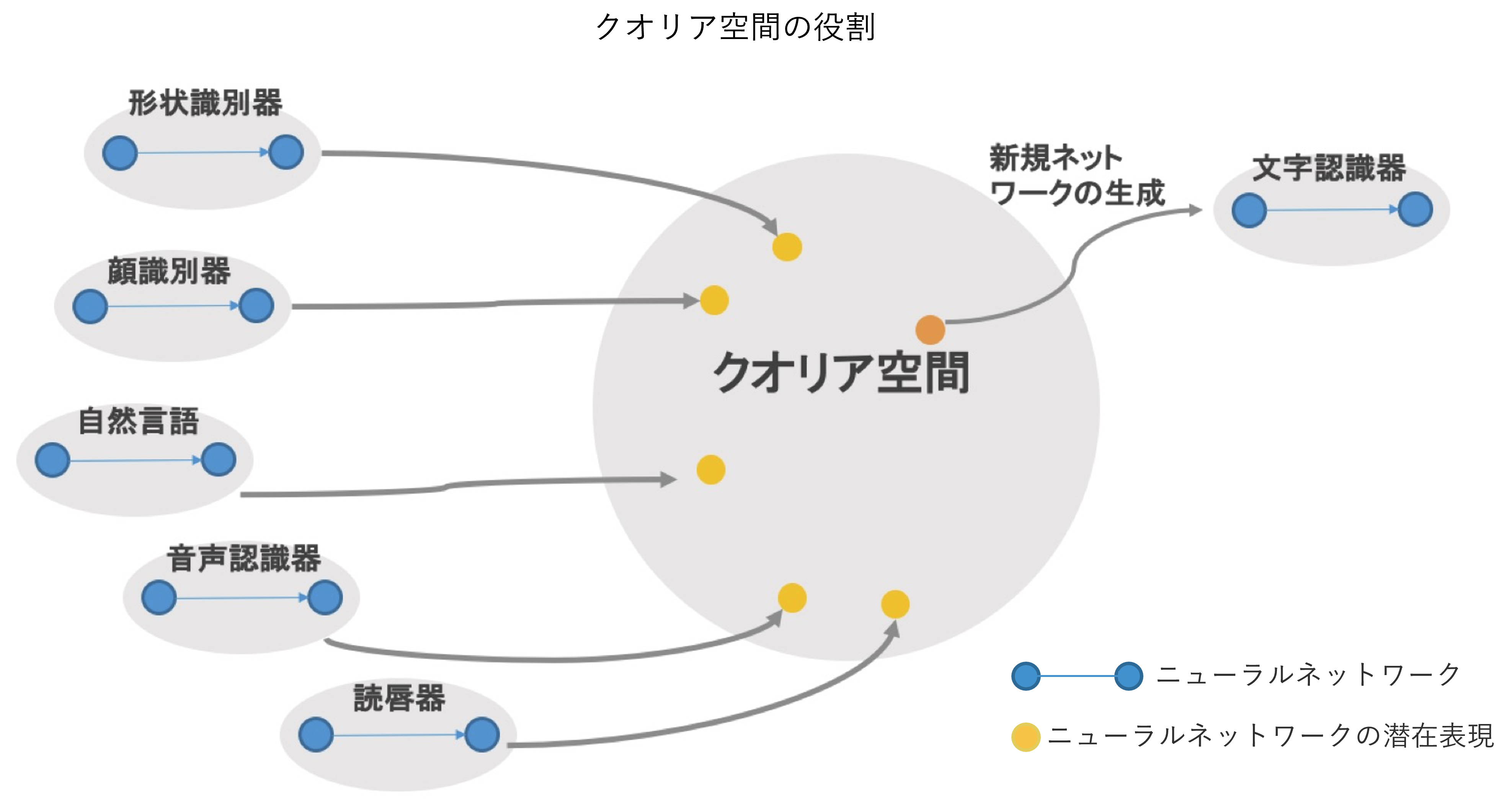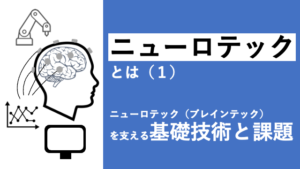REALISATION OF AGI WITH ‘CONSCIOUSNESS’ CAPABILITIES (4):
META-REPRESENTATION THEORY OF QUALIA – Being Able to Cope with New Tasks

What kind of "consciousness" does a human being have - at ARAYA, we are continuing our research to answer this question. By creating an artificial equivalent of consciousness (AI), we are trying to get to the bottom of it and realize a "general-purpose AI".
In a four-part series, Ryota Kanai, President of the company, will explain how he plans to approach the project in concrete terms.
Realization of general-purpose AI with the function of "consciousness" (1): Overview and three hypotheses
Realization of general-purpose AI with the function of "consciousness" (2): Information generation theory - "imagining" an imaginary situation
Realization of general-purpose AI with the function of "consciousness" (3): Global workspace theory - bridging information between brain modules
Realization of general-purpose AI with the function of "consciousness" (4): Meta-representation theory of qualia - Being able to cope with new tasks (this article )
Representation of neural networks of various functions as points in a "qualia space".
The ability that I (Kanai) point to as the third function of consciousness is also going to be implemented as a module connected to the global workspace. It is the "Qualia Space". We call the third function of consciousness "objectification of functions using the space of meta-representations". The "space of meta-representation" here is the "qualia space", and its role is the "objectification of function".
Let's explain it in a nutshell. The premise of the qualia space we consider is that the neural network itself, which performs each function, is represented by a latent variable. A neural network is a function that represents the relationship between input and output in terms of a large number of parameters, and if we consider all sets of parameters as a kind of data, we can reduce them to latent variables in the same way as data such as images or sound. If each neural network is transformed into a latent variable and the value of the latent variable is regarded as a coordinate, each neural network can be represented by a point in space. In this way, the space in which the various neural networks are embedded as points is the qualia space.
The position of each point fully reflects the characteristics of the neural network from which it originated. This means that the position of each point in the qualia space directly represents the relationship between the functions. Similar functions are placed as neighbouring points, while distant functions are placed as distant points. In other words, each point in the qualia space is a meta-representation, a representation of each function from a higher point of view. It is through this meta-representation that all functions become comparable.

Generate a neural network with the ability to cope with new tasks
The great advantage of the qualia space is that by exploring this space we can find functions that can deal with completely new tasks. This is because if the qualia space is made up of a sufficiently diverse set of functions, then any new function will have some similarity to an existing function and will be represented as a point in this space.
In fact, there are technologies that can generate neural networks for new functions in this context. One example is the Meta-Learning Autoencoder (MeLA) developed by the Massachusetts Institute of Technology (MIT). Using this technique, a "meta-recognition model" that has been trained on a large number of task datasets can be fed with just a few examples of the input and output data of a new task, and the latent variables of the neural network corresponding to that task can be output (*1). If this latent variable is input to the "meta-generating model", it is converted into a parameter of the neural network. Although there are some limitations, such as the number of inputs and outputs and the fixed structure of the neural network, it is possible to create a highly accurate neural network and the correctness of the concept has been confirmed.
1: T. Wu et al., "Meta-learning autoencoders for few-shot prediction," https://arxiv.org/abs/1807.09912
At ARAYA, we have also started basic research on the representation of neural networks by latent variables. To date, we have demonstrated that it is possible to determine the dataset used for training from the parameters of a trained neural network.
QUALIA SPACE BECOMES A PLACE FOR AI TO BECOME "SENSORY AWARE
This latent space is called the qualia space for the following reasons Qualia are sensory experiences that come to consciousness, and can be seen as the phenomenal aspect of consciousness itself. Some traditional theories of consciousness argue that the generation of qualia requires more than a direct representation of sensory information; it requires a meta-representation that captures the relationships between the senses. However, these theories have not clarified the form that meta-representations take in the brain.
ON THE OTHER HAND, IN THE QUALIA SPACE, WE CAN SEE A META-REPRESENTATION OF ALL THE FUNCTIONS OF AI. IN HUMAN TERMS, IT IS A META-REPRESENTATION OF THE SENSES. IF QUALIA WERE TO ARISE IN AI, THIS SPACE WOULD BE THE PLACE TO DO SO, HENCE THE NAME QUALIA SPACE.
IN THIS SPACE, ALL SENSORY FUNCTIONS, SUCH AS SIGHT AND HEARING, ARE EMBEDDED. FOR EXAMPLE, IN THE AREA CORRESPONDING TO VISION, INDIVIDUAL SENSATIONS SUCH AS "THE SENSE OF REDNESS" OR "THE SENSE OF PURPLE" ARE DISTRIBUTED ACCORDING TO THEIR DEGREE OF SIMILARITY. THE HUMAN CONSCIOUSNESS IS ABLE TO PERCEIVE THE PROXIMITY AND DISTANCE OF A GREAT VARIETY OF SENSATIONS, SUCH AS THE DIFFERENCE IN COLOUR, THE EXPRESSION AND SOUND OF A PERSON'S VOICE, VARIOUS TASTES AND SMELLS, COMFORT AND PAIN. THE QUALIA SPACE IS A TOOL THAT CAN GIVE AI A SIMILAR EXPERIENCE.
CONCLUSION: AIMING TO CREATE A GENERAL-PURPOSE AI THAT INCORPORATES THE FUNCTIONS OF CONSCIOUSNESS, AND TO CONTRIBUTE TO THE THEORY OF CONSCIOUSNESS
Our theory of consciousness, which we intend to apply to AI, is only tentative. Besides the world model, the global workspace and the qualia space, there is no shortage of other possible functions of consciousness, such as monitoring the processes we carry out on our own (*2).
*2: S. Dehaene et al., "What is consciousness, and could machines have it?", Science Vol. 358, 2017.
It is also unclear how far the current hypothesis is correct. For example, the interconversion of latent variables in the global workspace, and the mechanism for selecting information to be brought to consciousness, could be seen as a meta-understanding of the function of each module, similar to the role played by qualia space. They are essentially similar and could be integrated in some way.
The only way to know how far your hypothesis is valid is to test it with a working AI. At ARAYA, we aim to test our hypotheses with as little time and effort as possible by making the best use of existing technology.
The ultimate goal of this series of initiatives is to create a general-purpose AI that incorporates the functions of consciousness. However, there is another major goal: to contribute to the theory of consciousness. In order to implement the functions of consciousness in AI, we need to work out the details of its states and behaviour. We hope that this thinking will lead to ideas that break the boundaries of conventional theory. By bringing together the knowledge of front-line researchers with the breakthrough power of a start-up, ARAYA aims to achieve breakthroughs in both technology and research.
Articles
Realization of general-purpose AI with the function of "consciousness" (1): Overview and three hypotheses
Realisation of general-purpose AI with 'consciousness' functions (2): Information generation theory - 'imagining' imaginary situations
Realization of general-purpose AI with the function of "consciousness" (3): Global workspace theory - bridging information between brain modules
Realization of general-purpose AI with the function of "consciousness" (4): Meta-representation theory of qualia - Being able to cope with new tasks (this article)

 Contact Us
Contact Us

